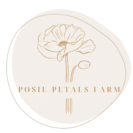The Best Companion Flowers to Grow with Vegetables
Growing flowers alongside your vegetables isn’t just about making your garden look beautiful—it also has practical benefits that can improve your harvest and create a more balanced, thriving ecosystem. Flowers can attract pollinators, deter pests, and even enhance the health of your soil. If you’re looking to maximize your vegetable garden’s potential, incorporating flowers is one of the easiest ways to do it. There are lots of great choices but I think these are the top 10 best companion flowers for vegetable gardens.

Why Grow Flowers with Vegetables?
Flowers serve several important roles in a vegetable garden. One of the biggest reasons to plant them is to attract pollinators like bees, butterflies, and hummingbirds. Many vegetables, such as tomatoes, squash, and cucumbers, require pollination to produce fruit. By growing flowers that pollinators love, you increase the likelihood of a successful harvest.
Another benefit is natural pest control. Certain flowers can deter unwanted insects or attract beneficial ones that prey on pests. For example, marigolds are known to repel nematodes and aphids, while alyssum attracts ladybugs, which feed on harmful pests like aphids and whiteflies. This means fewer chemicals are needed to keep your garden healthy.
Additionally, flowers can help improve the overall health of your soil. Some, like clover and nasturtiums, act as ground covers that prevent soil erosion and suppress weeds. Others, like borage, can add nutrients back into the soil when they decompose.
Finally, growing flowers among your vegetables can create a more biodiverse and visually appealing space. A garden full of color and variety is not only beautiful but also more resilient to disease and pests. By interplanting flowers with vegetables, you create a more natural and self-sustaining garden system.
 How to Add Flowers to Your Vegetable Garden
How to Add Flowers to Your Vegetable Garden
Integrating flowers into your vegetable garden can be done in several ways, depending on your space and gardening style. If you need help with planning out your garden, I can help with that! One of the simplest methods is interplanting, where flowers are grown directly among your vegetable rows. This is great for smaller gardens and works well with low-growing flowers like calendula and sweet alyssum.
For those with more space, dedicating specific flower borders around vegetable beds can be beneficial. This creates a natural barrier against pests while attracting pollinators. Taller flowers like sunflowers or dill can be planted at the back of garden beds to add height and structure without shading out your vegetables.
Another option is using companion planting strategies, where certain flowers are paired with vegetables for mutual benefits. For example, marigolds can be placed near tomatoes to repel pests, while nasturtiums can be planted around squash plants to deter vine borers.
If you’re short on garden space, consider using containers or vertical gardening techniques. Hanging baskets filled with flowers like nasturtiums or planters with lavender can be strategically placed near vegetable beds to maximize pollination and pest control.
 Best Flowers to Grow with Vegetables
Best Flowers to Grow with Vegetables
1. Marigolds
- Companion Vegetables: Tomatoes, peppers, cucumbers, beans, squash
- Annual or Perennial? Annual
- Zones: Grown as an annual in all zones
- Sun/Shade Preference: Full sun
2. Nasturtiums
- Companion Vegetables: Tomatoes, cucumbers, cabbage, squash. Nasturtiums are also edible!
- Annual or Perennial? Annual
- Zones: Grown as an annual in all zones
- Sun/Shade Preference: Full sun to partial shade
3. Calendula
- Companion Vegetables: Lettuce, kale, carrots, beans
- Annual or Perennial? Short-lived perennial in warmer zones, grown as an annual in most places
- Zones: 9-11 as a perennial, annual elsewhere
- Sun/Shade Preference: Full sun to partial shade
4. Borage
- Companion Vegetables: Tomatoes, strawberries, squash, cabbage
- Annual or Perennial? Annual
- Zones: Grown as an annual in all zones
- Sun/Shade Preference: Full sun
5. Sweet Alyssum
- Companion Vegetables: Lettuce, carrots, cabbage, onions
- Annual or Perennial? Annual
- Zones: Grown as an annual in all zones
- Sun/Shade Preference: Full sun to partial shade
6. Lavender
- Companion Vegetables: Cabbage, carrots, onions, broccoli
- Annual or Perennial? Perennial
- Zones: 5-9
- Sun/Shade Preference: Full sun
7. Sunflowers
- Companion Vegetables: Corn, beans, squash
- Annual or Perennial? Annual
- Zones: Grown as an annual in all zones
- Sun/Shade Preference: Full sun
8. Dill
- Companion Vegetables: Cabbage, cucumbers, lettuce, onions. Dill is also a great filler flower for cut bouquets!
- Annual or Perennial? Annual
- Zones: Grown as an annual in all zones
- Sun/Shade Preference: Full sun
9. Zinnias
- Companion Vegetables: Tomatoes, beans, peppers. Zinnias are one of the best beginner friendly flowers to grow as well.
- Annual or Perennial? Annual
- Zones: Grown as an annual in all zones
- Sun/Shade Preference: Full sun
10. Chamomile
- Companion Vegetables: Onions, cabbage, beans, cucumbers. Chamomile is also a fantastic herb for medicinal reasons or for cut flowers!
- Annual or Perennial? Annual
- Zones: Grown as an annual in all zones
- Sun/Shade Preference: Full sun to partial shade
My Final Thoughts
Adding flowers to your vegetable garden is an easy and effective way to boost productivity while enhancing its beauty. Whether you’re looking to attract pollinators, repel pests, or improve soil health, there are flowers that can help. By choosing the right companion flowers for vegetable gardens and strategically placing them among your vegetables, you’ll create a more balanced, thriving garden that benefits from nature’s built-in support system.
Enjoyed this article? Follow me on Instagram for more garden inspiration, flower tips, and behind-the-scenes looks at my gardening life!
📸 Instagram: @posiepetalsfarm



